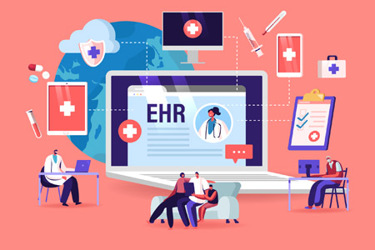How Can I Use Real-World Data In Clinical Trials?
By Hettie Stroebel, Launch Excellence

Regulatory approval usually requires definitive evidence from clinical trials. These are rooted in good study design, appropriate data collection, and thoughtful data analysis and may also be referred to as interventional trials. Interventions include, but are not restricted to, drugs, cells, and other biological products, surgical procedures, radiologic procedures, devices, behavioral treatments, process-of-care changes, and preventive care.
Then there is real-world data (RWD) and real-world evidence (RWE). These can be relevant and essential to bringing innovation to patients and gaining approval. Here is why.
Sources Of RWD
Real-world data describes what is happening in routine everyday clinical practice, outside of a clinical trial setting. It relates to information about patients’ health status and/or the delivery of healthcare that is routinely collected from a variety of multiple sources.
Some examples are electronic health records (EHR), medical claims databases, product and disease registries, and patient-generated data, including in home-use settings and other sources that can inform on health status, such as mobile devices. These sources contain volumes of information about patients that can be used to create algorithms for risk stratification or to gain insight into associations between exposures, interventions, and outcomes.
For example, a typical individual EHR may include a patient’s medical history, diagnoses, treatment plans, immunization dates, allergies, radiology images, pharmacy records, and laboratory and test results. This type of information, together with some of the other resources above, can be utilized to build patient profiles and capture the patient pathway or disease management.
Registries, on the other hand, are organized systems that collect clinical and other data in a standardized format for a population defined by a particular disease, condition, or exposure. Data about this population can be entered directly into the registry (e.g., clinician-reported outcomes) and can also include additional data linked from other sources that characterize registry participants. Such external data sources can include data from medical claims, pharmacy and/or laboratory databases, and EHRs, blood banks, and/or medical device outputs.
Registries have the potential to support medical product development. As such, registry data can ultimately be used, when appropriate, to inform the design and support the conduct of either interventional studies (clinical trials) or non-interventional (observational) studies.
For example, in the case of EHRs, data included in a registry can be of significant value to develop patient profiles incorporating demographic factors, diagnosis of interest, comorbidities, treatment utilized, and health-related outcomes. This information can be utilized to develop patient healthcare journeys and identify where in the journey intervention may take place with innovation.
Companies can utilize data from these two sources to make key strategic choices for their development programs, new product planning, or strategic launch plans.
A third data source of RWD is medical claims data. This data type is helpful to understand the current payment for care. Caution should be taken, however, as there may be some limitations to this type of data. Patients in different types of commercial or government healthcare payment programs can differ in a range of characteristics, such as age, socioeconomic status, health conditions, risk factors, and other potential confounders. Various factors in healthcare systems and insurance programs, such as medication tiering, formulary decisions, and patient coverage, can influence the degree to which patients on a given therapy in one healthcare system might differ in disease severity, or other disease characteristics, from patients on the same therapy in another healthcare system.
Utilizing this data can be a start to better understanding potential pricing scenarios but must in all cases be validated to demonstrate the data quality, integrity, representation of the population of interest, and nuances and intricacies of healthcare delivery and payment of care.
RWD can therefore be utilized in many commercial elements, such as, for example, to define the market landscape, patient profiles, patient care pathways, and market forecast and pricing and to understand risks and benefits, all of which enables significant cost- and time-savings across different phases of development and commercialization.
Using RWD To Enhance A Development Program
RWD can answer questions pertaining to the medical unmet need, natural history, and burden of disease, which may help prioritize areas of focus, identify early discovery targets, and determine which investigational drugs enter Phase 1. During Phases 2 and 3, RWD can be used to identify biomarkers or clinical characteristics that are associated with important clinical outcomes of relevance or develop surrogate biomarkers for clinical trials to shorten the duration of studies. By pooling information (incidence, prevalence, comorbidities, mortality, demographics and special patient groups, outcomes, risk factors, treatment options, severity, and medical history of a disease), RWD can help determine sample size and selection criteria and inform sample size calculations and study endpoints when planning an interventional study.
Obtaining RWD is not without challenges and has limitations. It requires multiple stakeholders to collaborate, communicate, and work together to identify the analytical data set and conduct the analysis. Technology, like artificial intelligence, may be a useful tool to transform the raw data from these data sources into high-quality insights that can be used in decision-making.
Advancing Regulatory Decision-Making
Real-world evidence is the clinical evidence of the usage and potential benefits or risks of a medical product derived from analysis of RWD. RWE can be generated through different study designs or analyses, including, but not limited to, randomized trials, including large, simple trials, pragmatic trials, and observational studies (prospective and/or retrospective).
Transforming RWD into RWE is not an easy task and requires correct analytical methods using high-quality data. It also requires an understanding of the International Classification of Diseases (ICD) codes, laboratory codes, vital signs records, and medication codes. Careful and deliberate efforts should be spent to address all these parameters accurately, as these up-front activities are critical to eliminate any negative downstream consequences and poor decisions.
The FDA considers RWE studies as part of the evidence package for submissions seeking authorization to market new medical products, including new drug applications (NDAs) and biologics license applications (BLAs), demonstrating the significant steps taken to advance the use of RWE in regulatory decision-making.
A recent review by Christina Purpura and co-authors found that 116 FDA approvals incorporated RWE in any form between January 2019 and June 2021, across more than 15 therapeutic areas, with the proportion of approvals incorporating RWE increasing each year.
These analyses demonstrate that FDA approvals may be possible using RWE as a complement to or, in some cases, an alternative to evidence traditionally yielded by randomized controlled trials (RCTs). It is important to highlight that the FDA also cited instances where the submitted evidence did not meet the threshold to be included in their decision-making, either directly stating that and/or identifying methodological issues in RWE generation. In the planning and design phase, early and frequent communication with the FDA is imperative to support regulatory applications and potential FDA approval using RWE.
A medical product that has been granted a marketing authorization may need to undergo additional or continuous surveillance to address specific quality, efficacy, or safety concerns that have not been achieved during its regulatory evaluation and/or where certain aspects can be assessed only under true field conditions during an extended period. Post-approval, the FDA uses RWD and RWE to monitor post-market safety and adverse events and to make regulatory decisions.
RWD Can Influence Payer Coverage Considerations
Payers sometimes use RWD in decision-making but prefer to conduct their own evaluations of RWE. RCTs are the gold standard of safety and efficacy evidence in selected study population but may not mirror real-world populations, resulting in payers having limited information when making formulary, contracting, coverage, and reimbursement decisions upon regulatory approval. Studies have shown that payers valued RWE pre-launch to inform formulary and contracting decisions and desired real-world comparative effectiveness data post-launch to validate coverage decisions.
In conclusion, whether RWD is used for making commercial strategic choices, as an option for regulatory decision-making, post-approval as a product safety resource, and/or for payer funding decisions, the focus must be placed on identifying high-quality, relevant, and reliable RWD in a timely fashion. Reliable RWE is built on using fit-for-purpose RWD, and accuracy, completeness, and consistency play pivotal roles in appropriate study design and the analysis plan, which may be supportive of regulatory approval.
About The Author:
 Hettie Stroebel is founder and CEO of Launch Excellence. She is a former Merck & Co., Inc. executive with more than 25 years’ experience in life sciences. Her focus is on global strategic marketing and commercialization, creating value for clients, patients, providers, and payers. She led seven product launches, all exceeding profitability targets in major global markets. Her impact on running business units ranges from $100 million to $1 billion per year. As founder & CEO of Launch Excellence Partners, a strategic marketing planning and commercialization firm, she guides early-stage pharmaceutical, cell and gene, and medical device companies to optimize launch and commercial success meeting internal and external expectations.
Hettie Stroebel is founder and CEO of Launch Excellence. She is a former Merck & Co., Inc. executive with more than 25 years’ experience in life sciences. Her focus is on global strategic marketing and commercialization, creating value for clients, patients, providers, and payers. She led seven product launches, all exceeding profitability targets in major global markets. Her impact on running business units ranges from $100 million to $1 billion per year. As founder & CEO of Launch Excellence Partners, a strategic marketing planning and commercialization firm, she guides early-stage pharmaceutical, cell and gene, and medical device companies to optimize launch and commercial success meeting internal and external expectations.
